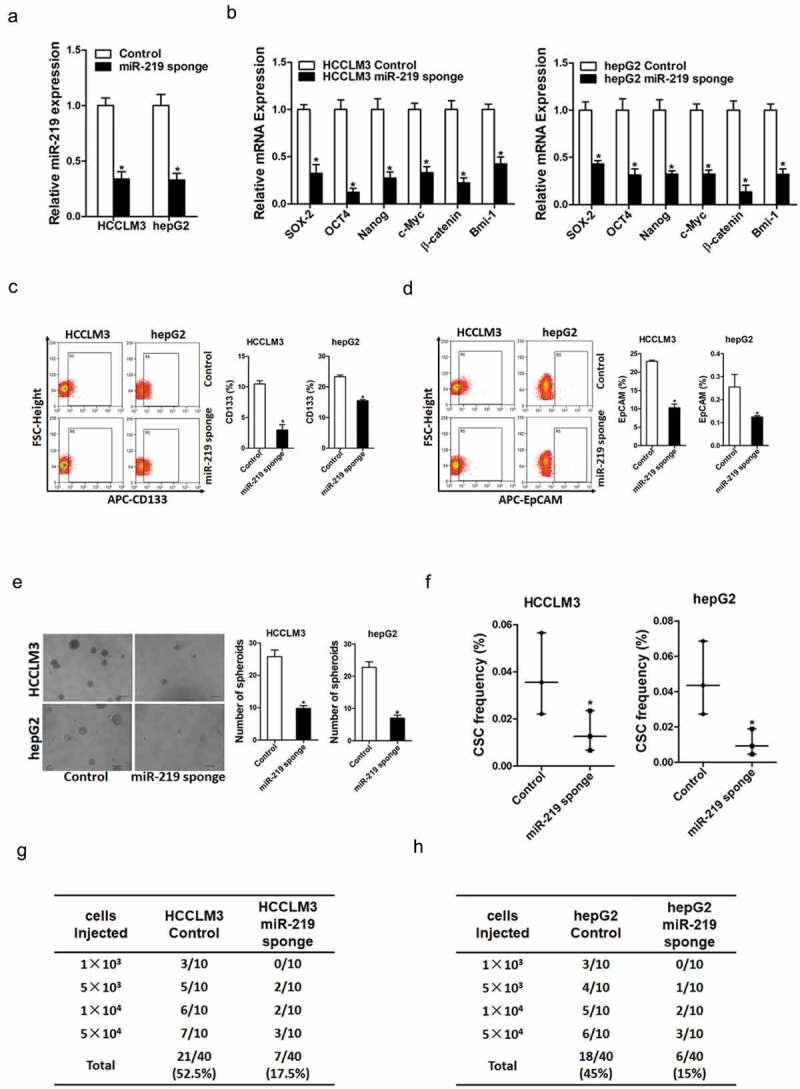Figure 2.

miR-219 is required for the maintenance of liver CSCs.
a. HCCLM3 and hepG2 cells were infected with miR-219 sponge virus and control virus. The stable infectants were checked by real-time PCR (n = 3). b. The expression of liver CSCs associated genes were examined in miR-219 sponge and control HCC cells by real-time PCR (n = 3). c. Flow-cytometric analysis of the proportion of CD133+cells inmiR-219 sponge and control HCC cells (n = 3). d. Flow cytometric analysis of the proportion of EpCAM+ cells inmiR-219 sponge and control HCC cells (n = 3). e. Spheres formation assay of miR-219 sponge and control HCC cells (n = 3). f. The frequency of liver CSCs in miR-219 sponge and control HCC cells was compared by in vitro limiting dilution assay (n = 8). g. The frequency of liver CSCs in HCCLM3 miR-219 sponge and its control cells was compared by in vivo limiting dilution assay. Tumors were observed over 2 months; n = 10 for each group. h. The frequency of liver CSCs in hepG2miR-219 sponge and its control cells were compared by in vivo limiting dilution assay. Tumors were observed over 2 months; n = 10 for each group.(Data are represented as mean±s.d.; *P < 0.05; two-tailed Student’s t-test.)
